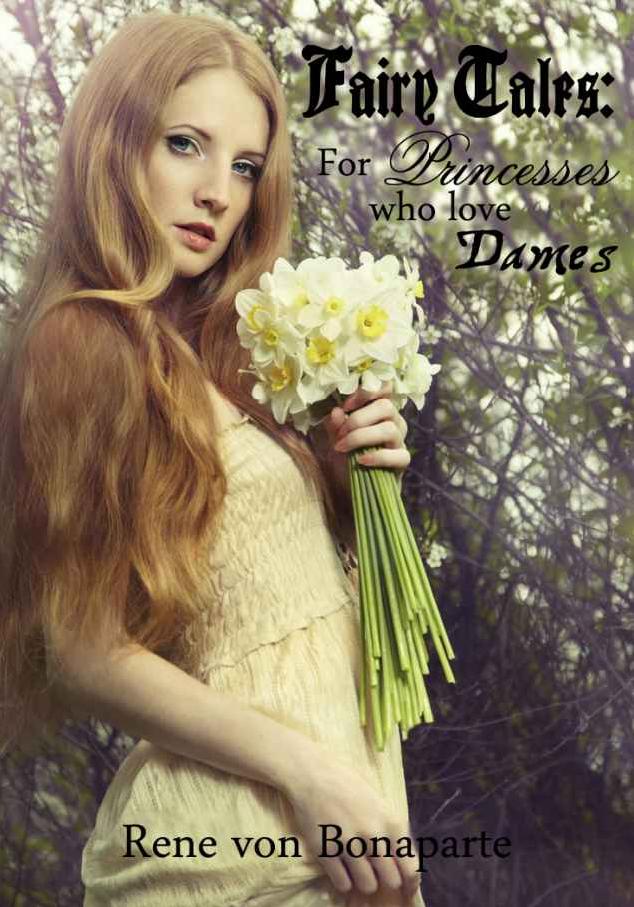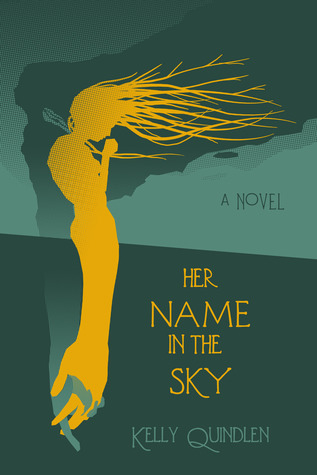
Fairy Tales for Princesses Who Love Dames by Rene von Bonaparte is a collection of fairy tales retold with both a lesbian and a modern twist. The beast and her prisoner, the sleeping beauty and her savior, are all women, and the pea put under the princess’ mattress is a USB drive. The narrative style is simplistic in the tradition of folk tales such as those collected by the Brothers Grimm, and I can imagine one reading them aloud to a child at bedtime, or to a lover, snuggled up in bed on a rainy day. I was pleased with the stories themselves, and the collection gets points for having at least one sad ending.
Unfortunately, this collection also has a bit of an issue with race. All the women followed by the narration are described with Caucasian features, and most of the other characters are white as well. Three of the main characters, lovers of the women followed by the narration, are women of color. (One antagonist is also a woman of color, but she is the twin of one of the protagonists, essentially her reflection.) If this had been handled correctly by the author, I would stop here and deem the POC representation decent, if limited. However, these three characters are also the three characters in the collection who have been trapped in animal forms: a swan, a beast, and a frog. They eventually turn back into humans; one dies, while another retains some animal characteristics. Furthermore, one of these characters, referred to as “Indian,” is described as having “exotic beauty.” I’m not going to go into why these things are a problem, here, aside from the fact that they’re racist; if you don’t know why they are a problem, I recommend doing some google searches.
As the author has made their POC characters, and only their POC characters, animals and exotified them, I am going to have to refrain from recommending the purchase of this collection. There is no excuse for this in a book published in 2012, and the stories are not outstanding enough to recommend in spite of problematic elements.




Carrie says
Call it morbid curiosity, but I had to purchase this book just to see what you were talking about… as a woman of color, I didn’t see anything racist about it? Especially in the Beauty and the Beast tale, where the black woman was the Beast, but she was also a Princess… I felt the tale as about beauty on the inside and not what’s out?
Also, I took a look at the author and miss Bonaparte is Indian (I think, or maybe black?), or at least a woman of color. I liked the couple of stories I’ve read so far, they’re very cute, so I feel this review is looking a little too into the racism factor.
Kieran A. Soull says
Are you serious? I’ve read all of the stories and personally I believe you’re looking too far into things. There’s nothing racist about who gets picked as what character, and unless you just didn’t pay attention, the beast is also a princess, or are you saying people other than white aren’t allowed to be royalty? Sorry but I find more racism in your picking out these differences than what’s actually there in the stories.
In my opinion this is a wonderful series and I’d recommend it to anyone who likes a good fairy tale. Unless they happen to be overly sensitive.
An Xin says
I’ve read this book already and I thought it was rather lovely through-and-through. The thought of race never even crossed my mind since characters are characters no matter what their skin color is.
I also feel that this review is looking too much into race. Should race even matter?
Again, referring to the Baker and the Beast, the entire moral of the story is that beauty is only skin deep and that the Beast was good on the inside AND she was of royal standing, making her a black princess.
Also, the Baker was based off of the author’s lover who isn’t Caucasian.
This review is more offensive than what you’re speculating. I’m sorry to say.
Danika @ The Lesbrary says
Hmm, that’s not at all suspicious that this review got three comments within a half hour, all anonymous, all people who haven’t commented before, all people who have already read this obscure book, all defending the book.
1) Pointing out racism is not more racist than racism. That’s ridiculous.
2) “Should race even matter?” Um, as long as racism still exists, yes, it does matter how PoC are represented.
I doubt the author meant to equate people of colour with animals, but she did in this book, by having them all be people trapped in animal form. It just means that she should re-consider this and improve in the future. It’s great that she included people of colour in her collection, and it’s great that one was a princess, but it doesn’t excuse the unfortunate implications of making all the PoC animals in this collection.